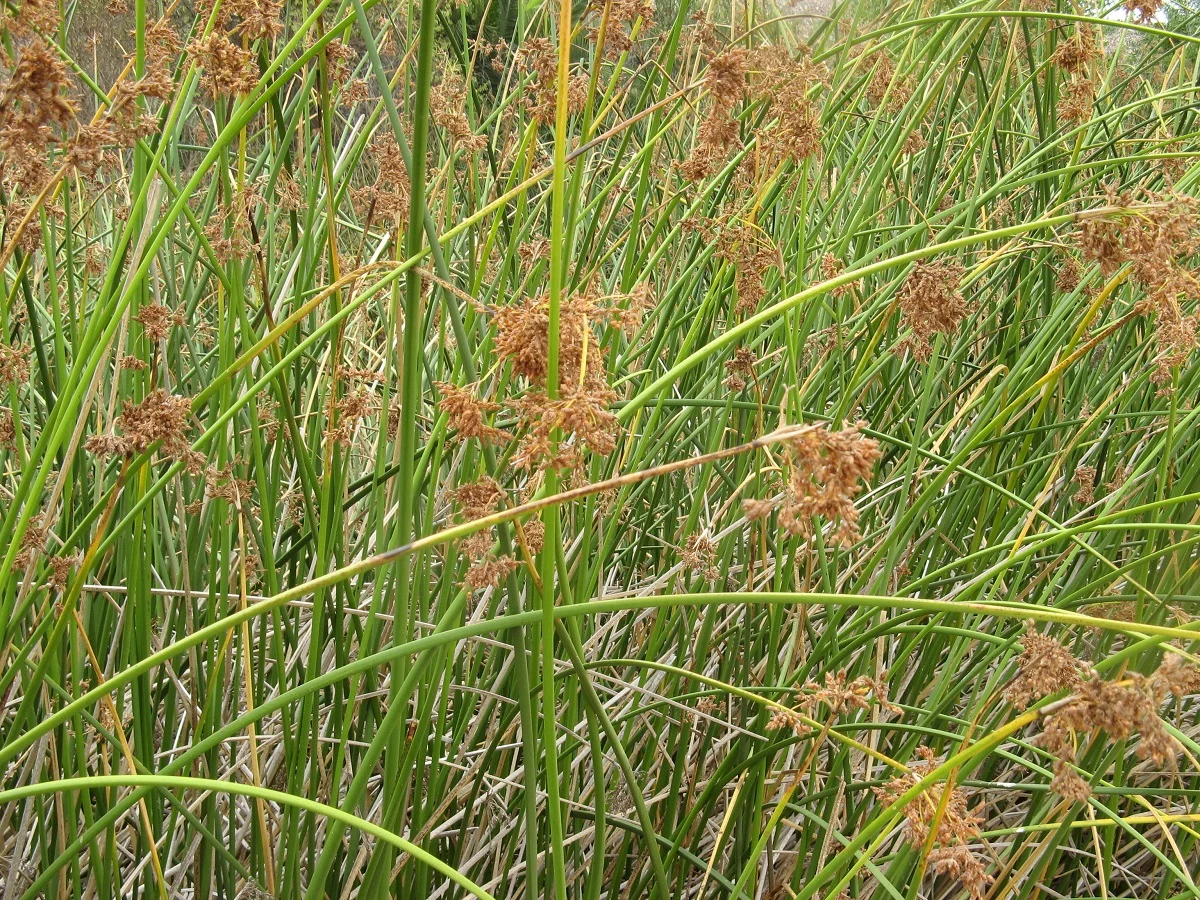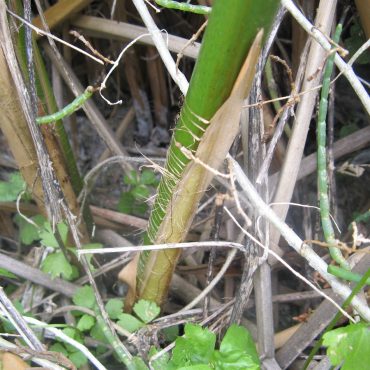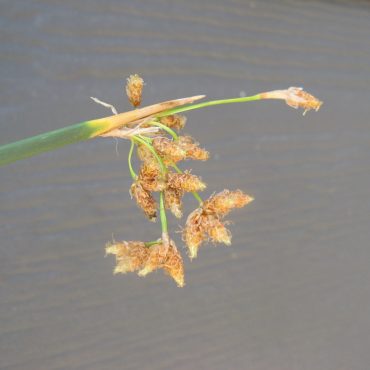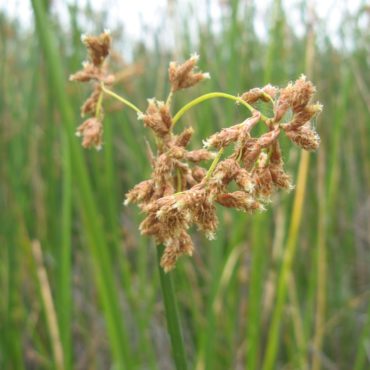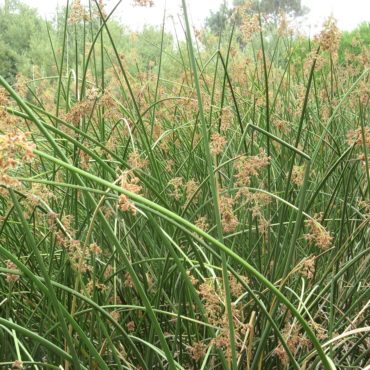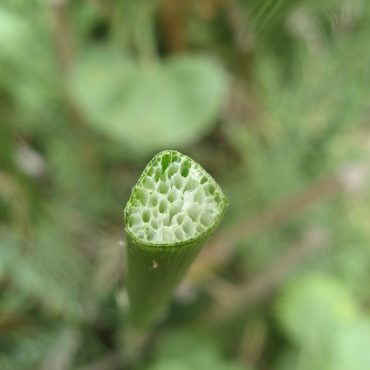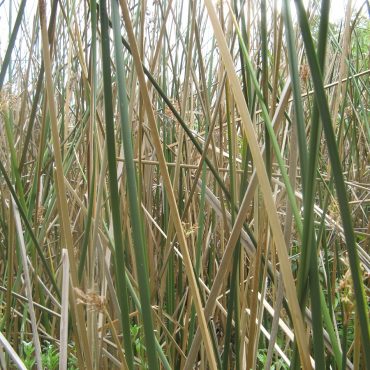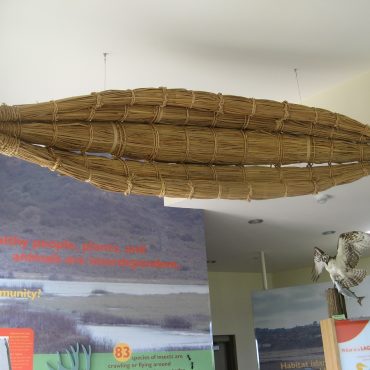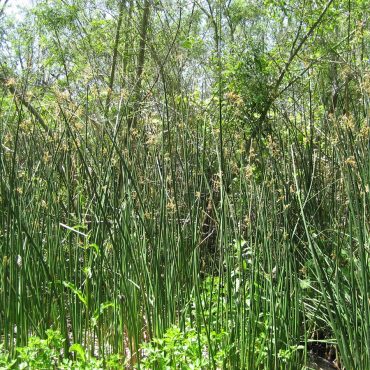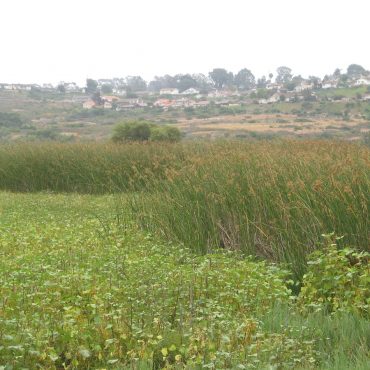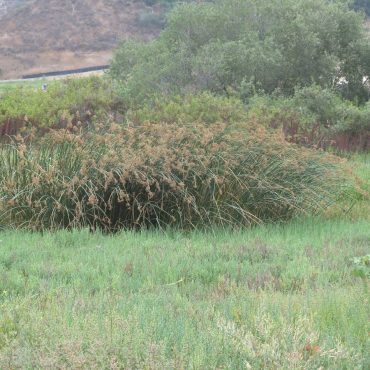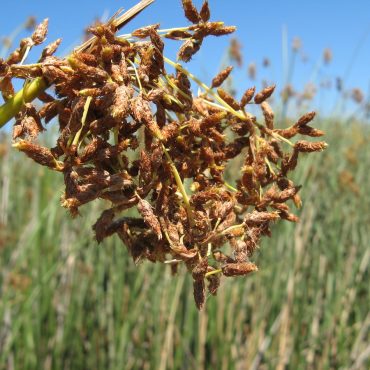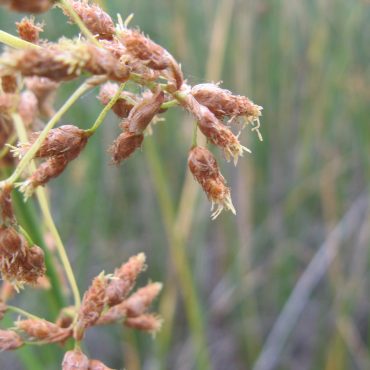California bulrush (Schoenoplectus californicus) is a common plant in freshwater and brackish marshes. Leaves are greatly reduced, and a plant consists of tall green stems, topped with brown tassels of flowers and seeds.
The Kumeyaay harvested the tender young shoots for food and used the stems for a variety of construction projects, from ropes to boats.
Although it will tolerate some salinity, most of our bulrush is found east of Interstate 5, where the ocean influence is muted. Large stands are visible from the East Basin trails. California bulrush is also found in Central Basin in areas kept wet by local freshwater runoff – along the Pole Road and east of the Nature Center boardwalk.

